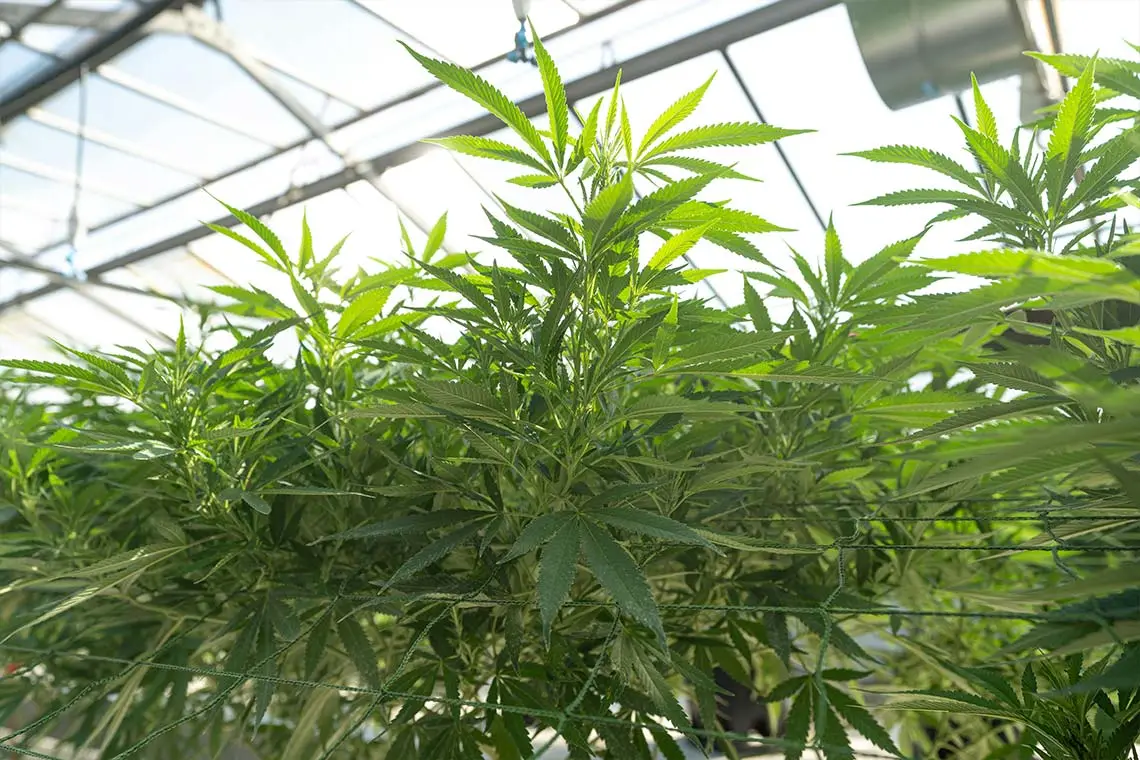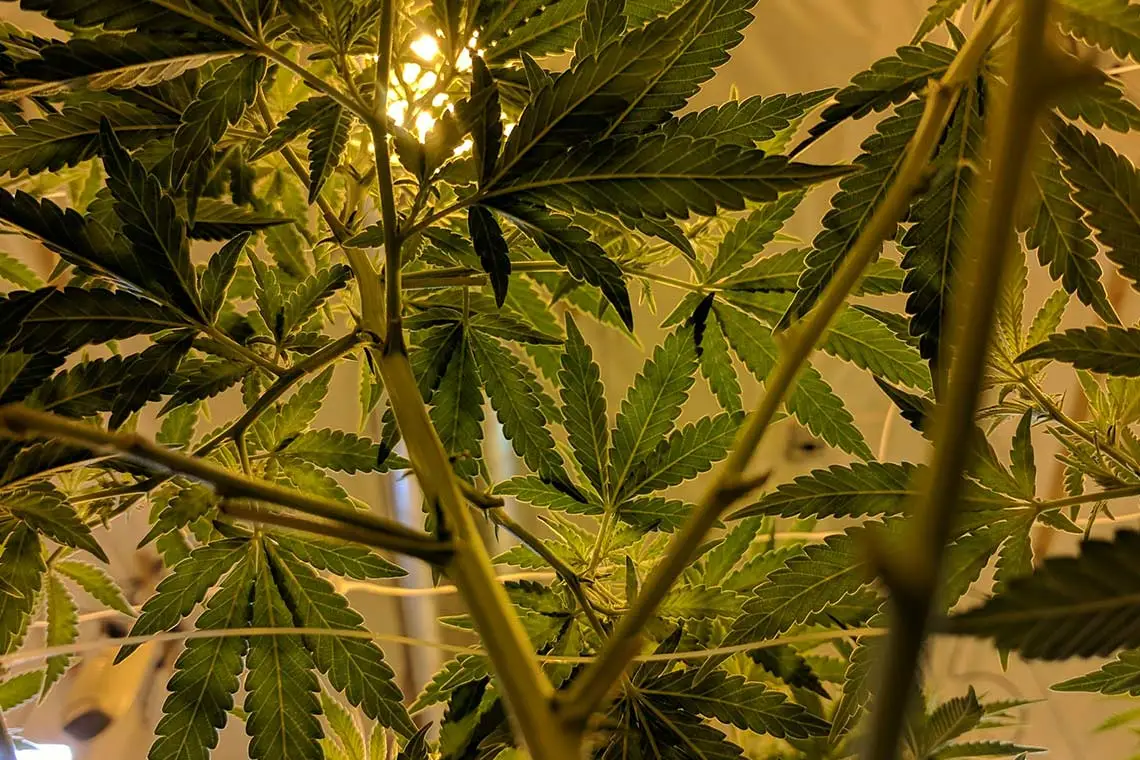Cultural, Informational
Cannabis Growing Methods
As the cannabis industry grows, so too do the methods growers use to grow. While the most common growing method, indoor growing, is still widely used today for its controlled environment, new methods like light deprivation are also becoming popular.
Light deprivation is a cannabis-growing trend booming among growers. This method has many benefits, including increased control, increased harvest yield, and overall efficiency. Especially when compared to other growing methods, it’s no mystery as to why this method is the next big thing in cannabis cultivation.
Table of Contents:
- What is the Light Deprivation Growing Method?
- Pros of Growing Using Light Deprivation?
- Cons of Growing Using Light Deprivation?
- What Are Other Indoor Growing Methods?
- Pros of the Indoor Growing Method
- Cons of the Indoor Growing Method
- What Are Outdoor Growing Methods?
- Pros of the Outdoor Growing Method
- Cons of the Outdoor Growing Method
- Final Thoughts
What is the Light Deprivation Growing Method?
Growers achieve light deprivation by using shade cloths or similar materials to limit sunlight exposure to 12 hours a day. This simulates the shorter daylight conditions that cannabis plants naturally experience during their flowering phase, not the seeding stage. By controlling light exposure, growers can effectively mimic the seasonal transition to autumn, influencing the plant’s growth cycle. By managing light intensity, growers can induce earlier flowering in their cannabis plants, which conserves time, money, and resources.
Light deprivation tricks the cannabis plant into believing it’s fall, prompting a natural response to the anticipated shorter days of winter; the plant produces an abundance of flowers in preparation for seeding. However, in a controlled light deprivation setting, this process yields seedless, high-quality cannabis buds instead of a plant filled with seeds.
Light-deprivation greenhouses are also more energy-efficient than other indoor methods, making the costs moderate, falling between indoor and outdoor cultivation depending on the project’s size and scale.
Pros of Growing Using Light Deprivation?
Control Over Environmental Factors
Because the plant is covered not only by a greenhouse but also by a thick fabric, the plant is blocked from environmental stressors such as precipitation, smoke, and pests. This yields healthier, more robust plants and eliminates risk factors such as losing much of the crop to weather or insects.
Larger and More Frequent Harvests
Because almost every aspect of the plant’s environment is controlled, growers can come to expect a reasonably regular harvesting cycle. Controlling the light exposure for your cannabis plants allows growers to maximize harvests throughout the year. This system not only delivers the optimal amount of light but also accelerates the life cycle of cannabis plants, reducing the chance of damage or contamination and creating perfect conditions that keep the plants healthy and robust.
Consistency
Light deprivation systems might seem complex, but they’re quite straightforward. Many cannabis light-deprivation greenhouses can be programmed to automatically open and close light shade cloths daily. This automation saves growers time, allowing them to focus on other tasks, and maintains consistent lighting for the plants. As the seasons change, adjustments can be made to the shade cloths to modulate sunlight exposure for your cannabis.
Efficiency
Light deprivation operations in cannabis cultivation are built for efficiency. These automated systems optimize natural light and offer sustainability all year round. Since there is no need for constant sunlight monitoring, staff can free up for other crucial tasks. An efficient cannabis greenhouse can be the key to a grower’s success in all areas.
Cons of Growing Using Light Deprivation?
Increased Effort
One downside of light deprivation is that it’s more work than other growing methods. To do it right, you have to cover and uncover your plants on a strict schedule. Messing up the timing could affect your plants’ flowering, leading to less bud despite all your efforts.
The Product May Be Difficult to Sell
Weed grown with light deprivation tends to be darker than regular weed because it doesn’t get as much light. It could be better quality, but some people might dislike darker colors.
More Limited Plant Options
Light deprivation doesn’t work for auto-flowering cannabis plants. These plants switch to flowering automatically based on their age, so messing with their light won’t make a difference. This limits what types of plants slight dep growers can use.
What Are Other Indoor Growing Methods?
Indoor Cultivation – Growing cannabis indoors is usually done in greenhouses or similar structures. These places are often divided into different rooms, each with its type of cannabis. This setup lets growers adjust the temperature in specific areas to experiment with breeding new strains.
Indoor growing gives you much control over the environment and helps you use your space efficiently. This method is also great for pest control and a consistent crop. However, it’s also the most expensive method, needing lots of energy and resources. Growers must use other tech solutions without a system to control the light.
Pros of the Indoor Growing Method
Pest and Disease Management
Indoor spaces offer controlled environments that reduce the risk of pests and diseases. With good sanitation practices and preventive steps, growers can lower the chances of infestations or outbreaks, leading to healthier plants.
Controlling Climate
Growers who grow cannabis indoors can manage the climate. Using systems to regulate temperature and humidity, they can create the perfect environment for their plants year-round. This consistency promotes steady growth and allows for precise control over the plants’ development.
Higher Yields
Growing cannabis indoors allows for fine-tuning various factors, such as lighting, nutrients, and cultivation methods. This level of control often leads to bigger yields compared to outdoor growing.
Year-Round Growing
Indoor cultivation lets growers grow cannabis all year, regardless of outdoor weather. This means a reliable supply of fresh cannabis, especially in areas with harsh climates or short growing seasons.
Cons of the Indoor Growing Method
Space Constraints
Indoor growers, especially those in urban areas, often need more space. The grow room or tent size dictates how many plants can be grown, posing challenges for those aiming to expand their operations. Indoor growers can only grow as much product as their environment provides space.
High Initial Investment
Starting an indoor cultivation setup requires a hefty investment. Growers must purchase equipment like grow lights, ventilation systems, and climate control devices, which can quickly add up, particularly for those with limited funds. Indoor cultivation is thought to be the most expensive growing method.
Risk of Neglecting Natural Processes
While indoor cultivation provides control over various factors, it also removes plants from their natural surroundings. This may result in limited exposure to natural sunlight, wind, and other elements crucial for a plant’s holistic growth. While indoor growers can control many environmental factors, plants may suffer from not being in their natural environment.
High Energy Usage
Indoor growth demands significant energy for lighting, ventilation, and climate control systems. This can lead to hefty electricity bills and environmental concerns due to increased carbon emissions.

Photo by CRYSTALWEED cannabis on Unsplash
What Are Outdoor Growing Methods?
Outdoor Cultivation – Outdoor cultivation involves using fields to grow cannabis, which is generally less expensive than indoor or light-deprivation greenhouse methods. It also gives growers virtually unlimited space for their crops. It’s the most cost-effective method, relying mostly on natural resources. However, complete exposure makes plants more vulnerable to weather and pests. Additionally, seasonal outdoor cultivation restricts the number of possible harvests each year.
Pros of the Outdoor Growing Method
Ample Growing Space
Outdoor growing offers virtually limitless space, enabling growers to expand their operations and produce larger quantities of cannabis without the constraints of indoor setups.
Cost Efficiency
Outdoor cannabis cultivation tends to be more cost-effective than indoor methods. Natural sunlight eliminates the need for high-powered grow lights, and the open environment reduces the necessity for elaborate ventilation and climate control systems.
Reduced Energy Usage
Utilizing sunlight for growth significantly reduces energy consumption compared to indoor setups. This leads to a smaller carbon footprint and promotes more sustainable cultivation practices.
Natural Growing Conditions
Outdoor cultivation exposes plants to natural elements and cycles, potentially enhancing flavors, aromas, and terpene profiles. This natural process can contribute to the overall quality and complexity of the final product.
Cons of the Outdoor Growing Method
Seasonal Limitations
Outdoor cultivation is confined to the natural growing season, which varies by location. In areas with short growing seasons, this can lead to a narrow cultivation window and a limited supply of fresh cannabis.
Weather Vulnerability
Outdoor cannabis cultivation hinges heavily on weather conditions. Adverse weather events like heavy rains, storms, or extreme temperatures can harm or destroy the crop. This lack of control over external factors poses a significant risk for outdoor growers.
Potential Legal Constraints
Outdoor cannabis cultivation may be subject to legal restrictions in certain regions. Growers must know local regulations and ensure compliance to avoid legal consequences. There are more legal constraints for outdoor growing because this method is more likely to impede other structures and properties.
Pest and Disease Exposure
Unlike indoor and light deprivation cultivation, outdoor crops are more exposed to pests and diseases. Without a controlled environment and isolation, growers must implement various pest management techniques to safeguard their plants from potential infestations and outbreaks.
Final Thoughts
The cannabis industry is increasingly turning to light-deprivation greenhouses due to their efficiency and consistent results. As the cannabis market grows rapidly, cultivators are looking for ways to differentiate themselves and make an impact.
A light deprivation system, which boosts yields and reliably produces robust plants, offers a compelling advantage. Also, these greenhouses are more cost-effective than other cultivation methods. Because of these reasons, it’s easy to see why more and more growers are turning to light deprivation for high-quality products.
**(Disclaimer reminder: This article is not medical advice. It is based on anecdotal user experience alone. If you are thinking about incorporating cannabis (delta-8 THC, delta-9 THC, CBD, etc) into your medicinal routine, please consult a healthcare professional. Do not stop taking any prescribed medications without first consulting your doctor.)
Disclaimer: This article was written in March 2024 and reflects the current laws of the United States at that time. Because cannabis laws in the United States laws are subject to change at any time, please make sure that you are always staying up to date on your federal, state, and local county’s cannabis laws. Additionally, we are NOT encouraging anyone to break the law––we are simply showing people ways to legally and discreetly bring their cannabis products along with them on their travels so that they may have access to those products when they reach their intended destination.


